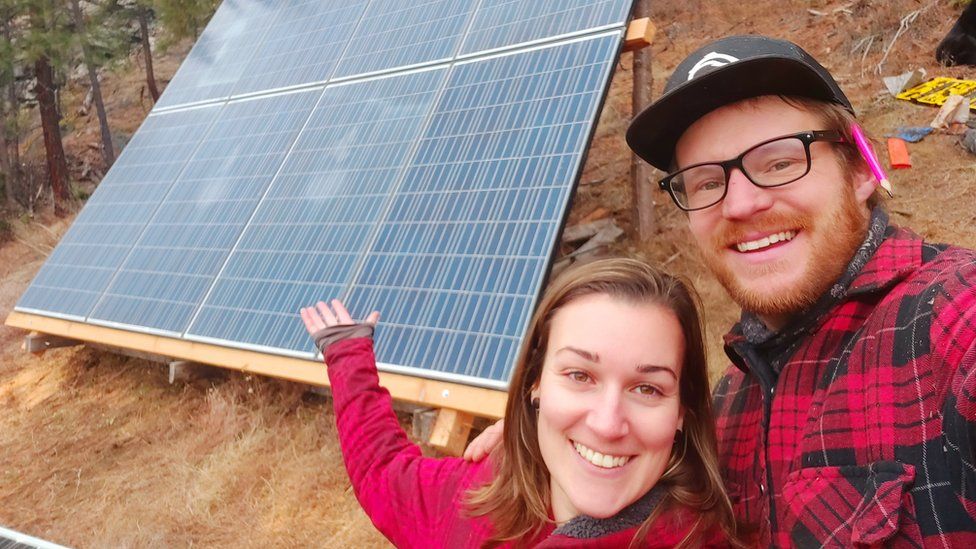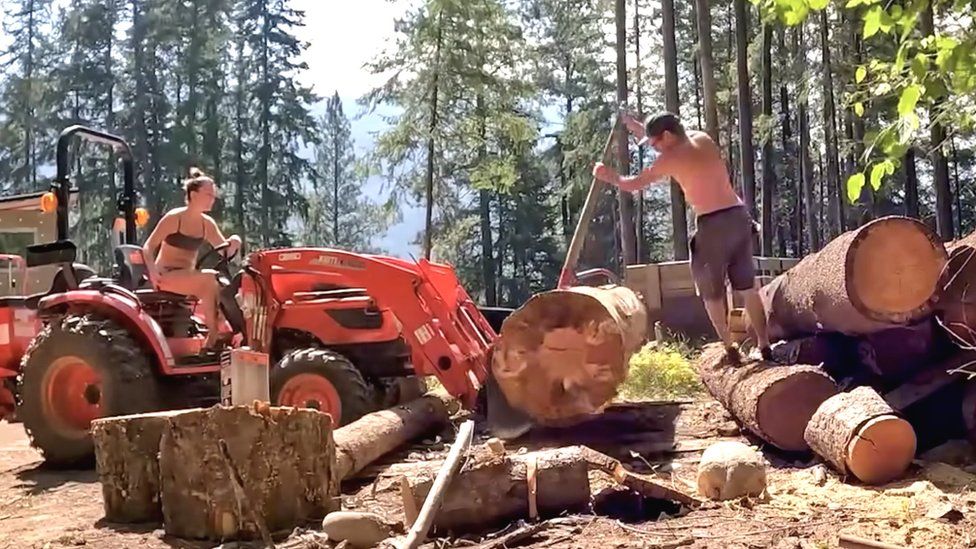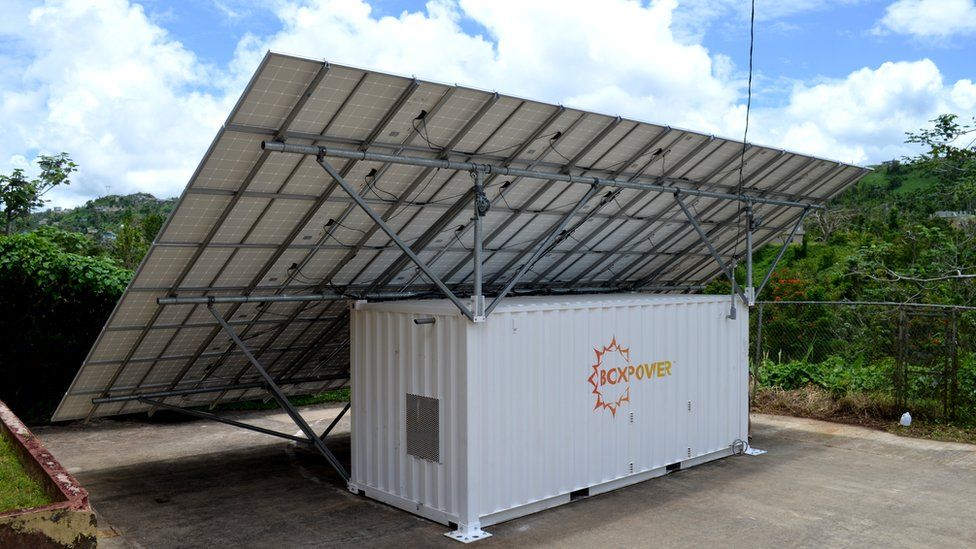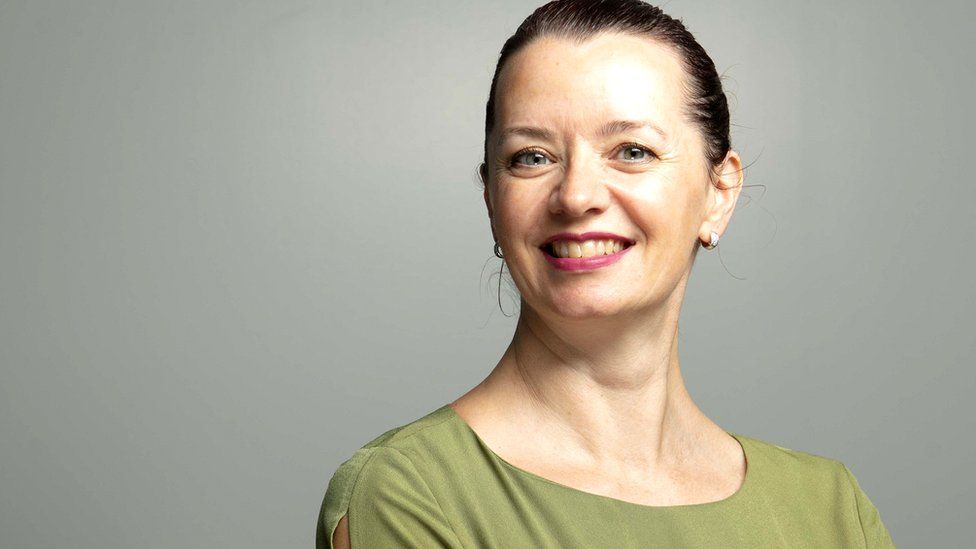Off-gridders take energy needs into their own hands
 This Off Grid Life
This Off Grid LifeIn a world where energy supplies can seem increasingly at risk, one couple living in the mountains of British Columbia, Canada, have taken matters into their own hands.
Katie Erickson and Greg Mooney are building their dream home – and it’s off-grid.
Their goal is to be as self-sufficient as possible and so have installed solar panels, batteries and a back-up generator.
“We see no shortage of natural disasters in our area,” says Mr Mooney, mentioning storms and wildfires as examples. “Whenever there’s power outages in our community nearby, we’re always fine,” Ms Erickson adds.
A 2,100 watt solar energy system is large enough to keep a small freezer, fridge, washing machine and laptops running, they say, adding that they hope to triple or quadruple their solar-generating capacity in the future.
During the winter, the pair rely on a small gas generator when there is too much cloud around. They document their experiences on a YouTube channel called This Off Grid Life.

You might think that this approach is only suited to a handful of mavericks who dream of living by themselves in the forest.
But climate change is making extreme weather events more commonplace and prompting many people to reconsider the security of supply.
With the cost of energy soaring in many parts of the world, thanks in part to the war in Ukraine, it’s possible that more people will consider installing solar panels and battery systems to lower their costs – or even go off-grid entirely.
Institutions and communities are already installing miniature power grids that can keep going after severe weather or other disasters have interrupted the main supply.
It’s called “islanding” or “island mode”. When an extreme winter storm hit Texas in February 2021, the University of Texas at Austin relied on its own energy sources and microgrid to avoid losing power, despite widespread blackouts nearby.
What if your local school could do this too? Or even your own house?
“I think we are inching our way to the point where every neighbourhood could have a microgrid,” says Katherine Hammack, director of special projects at Green Business Certification Inc. “Climate change is driving people to look at alternate solutions.”
It is increasingly common in the US. Take the town of Fairfield in Connecticut, for instance. After Hurricane Irene in 2011, officials began looking for ways of ensuring that some essential services could continue to function in the event of a similar disaster.
If the main grid fails, the town now has a microgrid system, including a gas generator and solar panels, which can provide power to the police and fire headquarters, a homeless shelter, emergency communications centre and a mobile phone mast.

Some companies now manufacture miniature microgrid systems, ready to deploy during a crisis.
When Hurricane Maria slammed into Puerto Rico in 2017, cutting electricity supplies across the island, US firm BoxPower provided a solar panel and microgrid solution that comes packed in a shipping container. The technology was used to restore electricity supplies at two schools and a community centre.
The same kit is in place to this day and activates automatically whenever there is a problem with the main power grid. “Those schools now never lose power,” says BoxPower chief executive and founder Angelo Campus.
BoxPower has since worked with utility companies in California to set up standalone grid systems for some remote communities. For example, the community of Briceburg used to receive electricity via long overhead power cables that ferried power from the main grid through forests and up hillsides. But this cabling was prone to damage from wildfires, explains Mr Campus.
“They replace [the cables] with an off-grid solar, battery and generator system which provides 100% of the power to that customer,” he says.

In other words, the community is now completely detached from the main grid. But in theory its power supply, being independent, ought to be much more stable than before. It is also greener, with 80%-90% of the electricity now coming from renewables.
There are some examples of island-style microgrids in the UK, such as at the Centre for Alternative Technology in Wales, but they are rare, says Sara Walker, professor in energy at Newcastle University.
“In practice, at the moment it’s not allowed by the network operators because it means that that bit of network is potentially live at a time when they’re doing repairs,” she explains.

Installing microgrids that can operate independently of the main grid also requires additional hardware and policies over when and how to detach from the main grid, adds Prof Hongjian Sun from Durham University, an engineer who specialises in energy grids and power supply.
A spokesperson for the Energy Networks Association in the UK said the electricity grid here is more resilient than that in the US but that islanding does occur occasionally.


BoxPower’s Angelo Campus suggests that fully off-grid solutions might be best suited to remote households or small isolated communities, whereas in built-up urban areas it may be easier and cheaper to rely on a network of large batteries that could send power back to the main grid during a shortfall.
Whatever the exact solution, with climate change and geopolitics continuing to threaten the reliability of energy supplies we have for so long taken for granted, the lure of back-up infrastructure of one kind or another is arguably getting stronger by the day.
The off-gridders certainly know where they stand.
“Everybody should have some sort of back-up to stay safe,” says Ms Erickson.
“The world is changing,” adds Mr Mooney, “and we need to change with it.”
